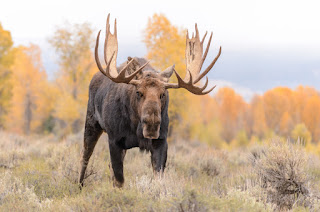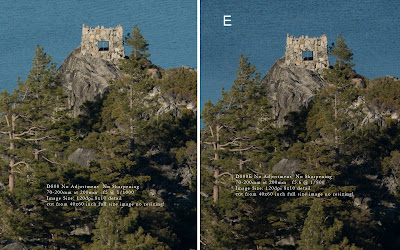Are you confused reading everything on the internet about the D800 and D800E Nikon cameras? I was, so I set out to find the truth...for me.
I’m a wildlife and landscape photographer and there are several challenges that one of these new Nikon bodies may help me with in future image making. Which, if either, is right for me? D800 or D800E? Which one will serve my needs best? I have a few questions that I want answered before I decide which one I should use.
These are the questions I wanted to answer:
How much more detail is available in the E compared to the nonE in large prints?
When and where in nature does moire’ appear, if at all?
How can moire’ be removed in an image in post processing and which software will do the best job?
Those are the basic questions of which I found no easy answer. Each answer led to more questions. I did get the answers I was looking for...eventually.
Disclaimer: I am not a tech geek and with no disrespect to the techies, I don’t want to be. I don’t know all there is to know about diffraction, refraction, detraction, attraction, et al, but I do know image making. I do know what I like and how to get it without knowing all the techie stuff, although some knowledge of it is helpful, it's what I see in the finished image that makes my day.
Here are the initial criteria I used to make the tests:
I kept settings on both cameras identical.
All tests were shot in raw, white balance set to 5500k, Aperture Priority and Manual exposure settings were used.
I used two lenses during the tests. The 70-200mm f2.8 and the 200-400mm f4. The choice was based on the ability to mount either lens on a tripod and change cameras without moving the lens, the focus, or the zoom. It was also based on the fact that those are my most used lenses. Remember, I was testing for me. VR (vibration reduction) was turned off.
Image Process:
All images were shot in RAW.
I used Lightroom 4 to import images. I set all LR adjustments to zero including sharpening and noise reduction. For some tests I set LR sharpening at default, +25.
Camera Calibration was set to Adobe Standard and Process is 2012. If you don’t know about all this it doesn’t matter. What matters is that all compared side-by-side images were processed the same. That’s the important point. I was not trying to make one image look like the other, I was trying to see the difference when settings were equal.
Now the results for image quality:
My assistant for the first series of test was Griffin Gregory, he did a terrific job in the field as well as with side-by-side image comparisons on the monitor. After an exhaustive first morning we found the D800E to be slightly sharper with slightly more detail in most of the images. There was one comparison where the D800 appeared to be better. That could be a result of operator error.
The afternoon shoot produced some fantastic results. My wife Kathy and I headed out to Emerald Bay, Lake Tahoe for some side by side landscape images and here is where the E proved itself.
Here are a couple of side-by-side images from Emerald Bay:
The next day I printed the above images for comparison. This is the most important test for me. Images viewed on the web or even on the monitor won’t show all the nuances that may be apparent in the print. Here’s how I made the prints:
I did not resize. I used the image size that came right out of the camera, 7360x4912. What ever dpi you choose for printing without resizing will determine the print size. Divide ppi by selected dpi equals image size. 7360ppi/240dpi=30inches 4912ppi/240dpi=20inches. At full resolution without resizing at 240dpi you get a 20x30 print (rounded) from the 36mp sensor of the D800/E. At 120dpi you get a huge 40x60 inch print!
Now before I get a lot of flack on 240dpi and 120dpi understand this; you can use what ever dpi you are comfortable with. I use 240dpi almost all the time when printing with my wide format Epson. Sometimes I use 120dpi if my image is really large. I can’t see the difference when the print is viewed at the normal distance for the size. (let’s not go there either) Please keep in mind, everything I am saying is what works for me. You may have different criteria and different needs.
This side-by-side of Fannette Island is a crop from the images above. I took an 8x10 section of the tea house out of a 40x60 inch image size. I printed both and found the E to be noticeably sharper with more detail. You may not be able to see the difference as easily on your monitor.
Well, that’s it for now. My conclusion so far is that the D800E is apparently sharper with more detail in large prints than the D800. But only in large prints. What will my next blog reveal and which Nikon did I choose? Stay tuned...


















































